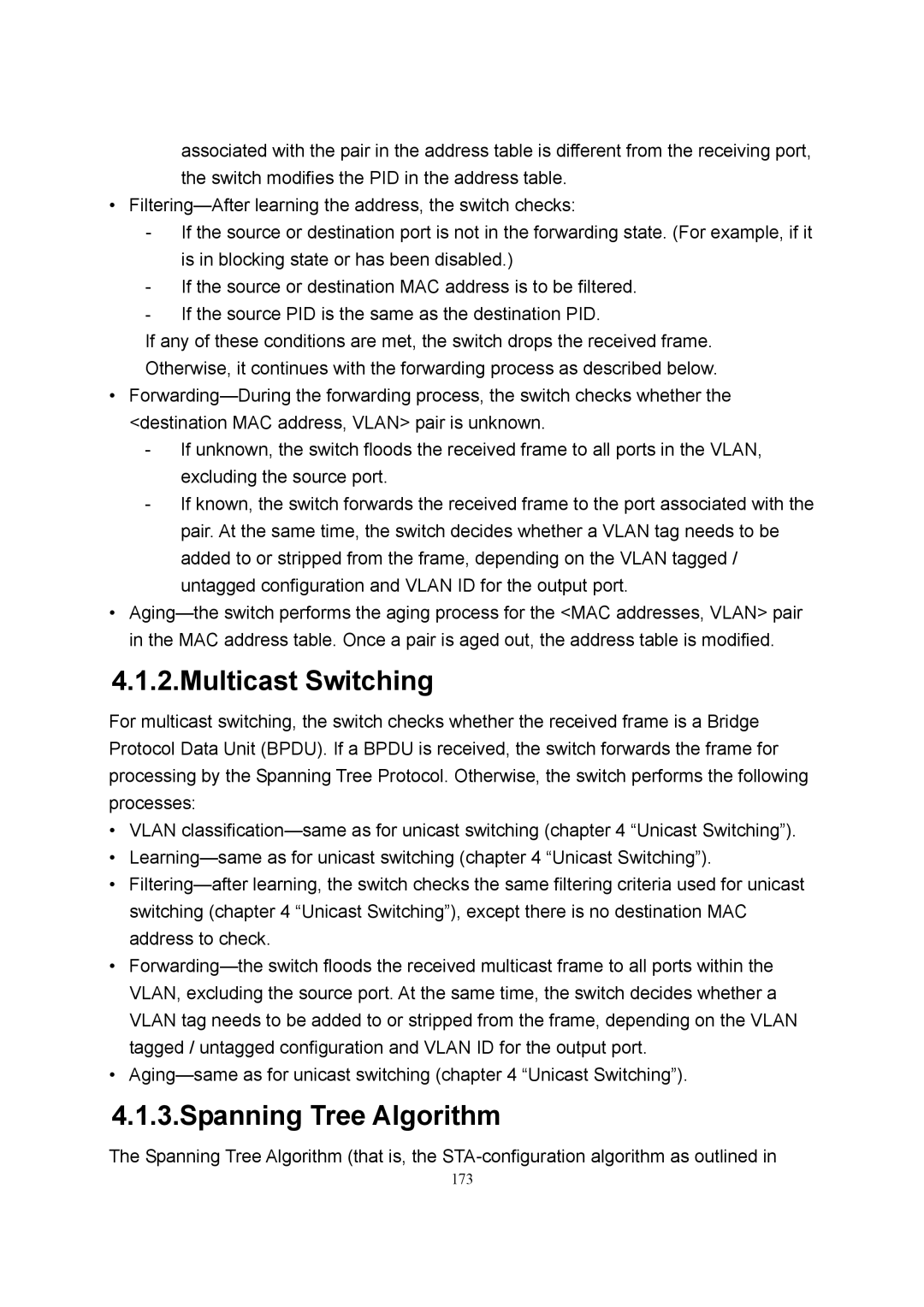associated with the pair in the address table is different from the receiving port, the switch modifies the PID in the address table.
•
-If the source or destination port is not in the forwarding state. (For example, if it is in blocking state or has been disabled.)
-If the source or destination MAC address is to be filtered.
-If the source PID is the same as the destination PID.
If any of these conditions are met, the switch drops the received frame. Otherwise, it continues with the forwarding process as described below.
•
-If unknown, the switch floods the received frame to all ports in the VLAN, excluding the source port.
-If known, the switch forwards the received frame to the port associated with the pair. At the same time, the switch decides whether a VLAN tag needs to be added to or stripped from the frame, depending on the VLAN tagged / untagged configuration and VLAN ID for the output port.
•
4.1.2.Multicast Switching
For multicast switching, the switch checks whether the received frame is a Bridge Protocol Data Unit (BPDU). If a BPDU is received, the switch forwards the frame for processing by the Spanning Tree Protocol. Otherwise, the switch performs the following processes:
•VLAN
•
•
•
•
4.1.3.Spanning Tree Algorithm
The Spanning Tree Algorithm (that is, the
173
